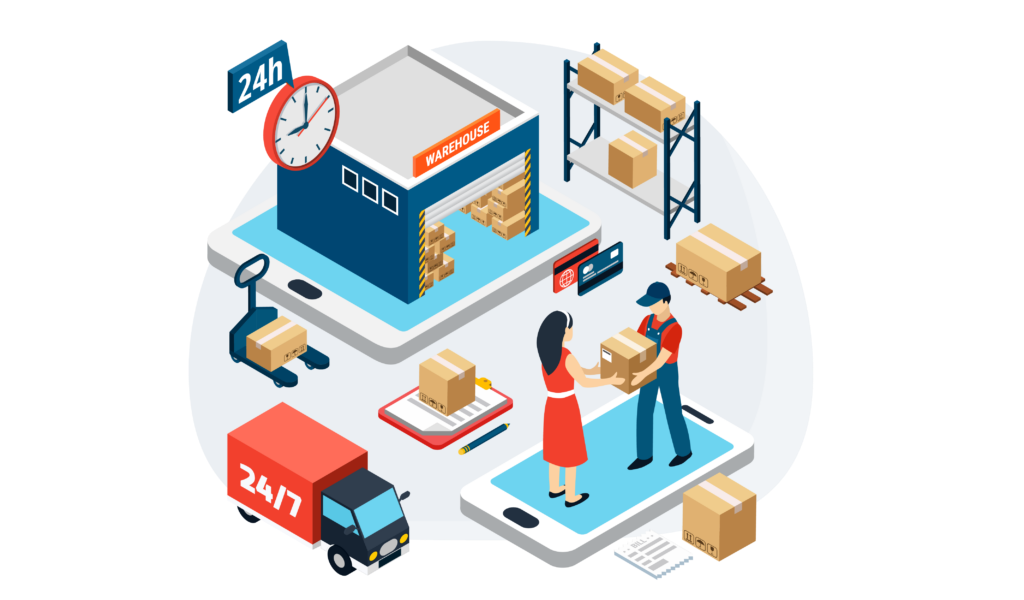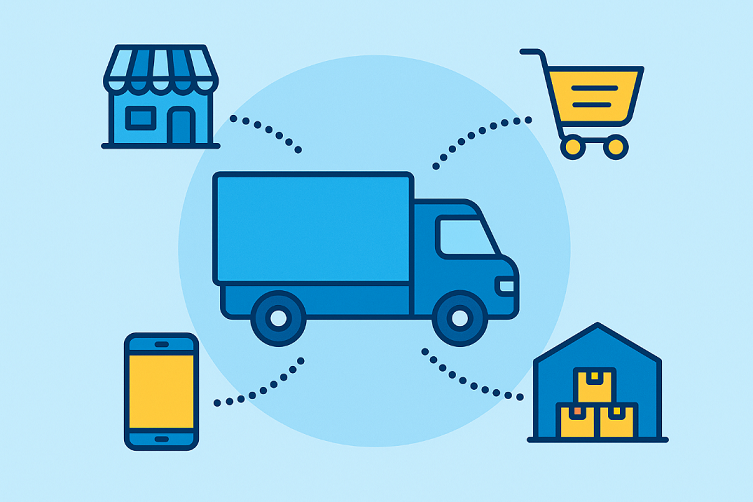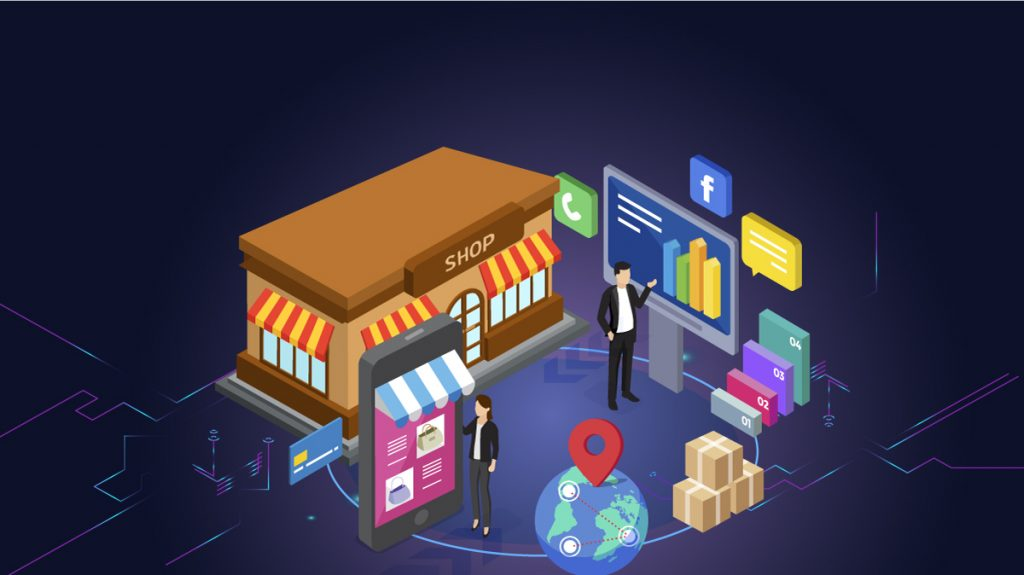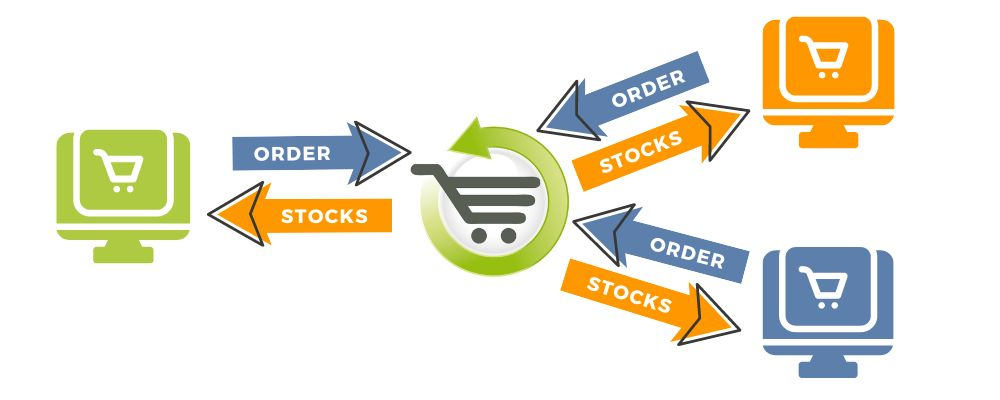Le secret du commerce électronique omnicanal : l'intégration de l'expédition est la clé
Le commerce électronique omnicanal modifie la manière dont les entreprises s'engagent avec leurs clients, mais il existe un élément essentiel que de nombreuses marques négligent : le commerce électronique.intégration de l'expédition. Alors que les entreprises se concentrent sur la création d'une expérience d'achat transparente, l'expédition reste souvent fragmentée, ce qui entraîne des inefficacités, des retards et une mauvaise expérience client. Ce blog explore les raisons pour lesquelles l'intégration de l'expédition est cruciale pour le succès de l'omnichannel et comment elle peut améliorer la satisfaction des clients, l'efficacité opérationnelle et réduire les coûts.
Colis postal fournit aux entreprises des solutions d'intégration de l'expédition qui optimisent les livraisons et améliorent l'expérience des clients.

L'essor du commerce électronique omnicanal
Qu'est-ce que le commerce électronique omnicanal ?
Commerce électronique omnicanal implique l'intégration de différents canaux de vente - tels que les magasins physiques, les plateformes en ligne, les applications mobiles et autres - afin d'offrir une expérience client unifiée. Les clients s'attendent à une transition transparente entre ces points de contact, et les entreprises doivent s'assurer qu'elles répondent à ces attentes.
Pourquoi le commerce électronique omnicanal est-il important ?
Le commerce électronique omnicanal est devenu crucial car les clients exigent de plus en plus de flexibilité dans leur façon de faire des achats. Ils veulent pouvoir passer d'un appareil à l'autre et d'une plateforme à l'autre sans interruption. Toutefois, pour répondre à ces attentes, il ne suffit pas d'une image de marque et d'un marketing cohérents ; il faut aussi une gestion efficace de l'offre et de la demande. intégration de l'expédition est l'épine dorsale d'une stratégie omnicanale réussie.
Le secret : l'intégration de l'expédition
Pourquoi l'intégration de l'expédition est-elle souvent négligée ?
Alors que de nombreuses entreprises se concentrent sur l'amélioration de l'expérience client, l'intégration de l'expédition est souvent ignorée. La logistique de l'expédition - coordination des entrepôts, des transporteurs et des systèmes d'inventaire - est complexe. Sans solution d'expédition unifiée, les entreprises sont confrontées à des retards, à un suivi inexact et à des options de livraison incohérentes, autant d'éléments qui peuvent nuire à la confiance des clients.

Que se passe-t-il lorsque le transport maritime n'est pas intégré ?
Un système de transport maritime fragmenté entraîne :
- Frais d'expédition incohérents: Les frais d'expédition varient en fonction du canal par lequel les clients effectuent leurs achats.
- Retard de livraison: Sans intégration, les commandes peuvent être traitées ou expédiées à des moments différents, ce qui entraîne des délais de livraison incohérents.
- Frustration des clients: Les mauvaises expériences en matière d'expédition - frais imprévus, colis perdus ou délais non respectés - entraînent un mécontentement et une baisse de la fidélité.
L'impact d'une mauvaise intégration de l'expédition sur l'expérience client
L'expédition est un élément essentiel de l'expérience client, et lorsqu'elle n'est pas bien intégrée, c'est toute l'expérience d'achat qui en pâtit. Les clients s'attendent à recevoir leur commande à temps, avec un suivi cohérent et sans frais imprévus. Un processus d'expédition fragmenté n'affecte pas seulement la satisfaction du client, mais nuit également à la réputation de la marque, ce qui se traduit par une diminution des achats répétés.
Principaux avantages de l'intégration de l'expédition
1. Cohérence et efficacité
Intégration de l'expédition garantit que les clients bénéficient d'une expérience d'expédition cohérente, quel que soit le canal qu'ils choisissent. Qu'ils achètent en ligne, en magasin ou via une application mobile, les clients bénéficient des mêmes options d'expédition, des mêmes vitesses de livraison et des mêmes informations de suivi.

- Exemple: Un client qui commande sur le site web doit avoir accès aux mêmes choix d'expédition que celui qui achète en magasin, afin d'assurer la cohérence entre les différents canaux.
2. Suivi en temps réel
L'intégration de l'expédition permet aux entreprises d'offrir un suivi en temps réel, garantissant que les clients peuvent suivre leurs commandes du début à la fin. Les mises à jour en temps réel renforcent la confiance et réduisent l'anxiété, ce qui se traduit par une expérience client plus positive.
- Bénéfice: Les clients peuvent facilement suivre leurs commandes, ce qui évite toute confusion et améliore la satisfaction générale.
3. Amélioration de l'exécution des commandes
Les systèmes d'expédition intégrés rationalisent l'ensemble du processus accomplissement de la gestion des commandes à la livraison. Les entreprises peuvent mettre à jour automatiquement les stocks sur l'ensemble des canaux, synchroniser les commandes et fournir des délais de livraison précis.
- Bénéfice: L'amélioration de la gestion des commandes accélère le processus de livraison, ce qui permet d'éviter les problèmes de survente ou de rupture de stock.
4. Optimisation des coûts
En intégrant l'expédition, les entreprises peuvent réduire leurs coûts grâce à l'automatisation et à une utilisation plus efficace des ressources. L'intégration de l'expédition permet aux entreprises de choisir les méthodes d'expédition les plus rentables en fonction du type de commande, ce qui permet à l'entreprise et au client de bénéficier d'une réduction des coûts.
- Bénéfice: La réduction des frais d'expédition améliore les marges et permet aux entreprises d'offrir de meilleurs prix à leurs clients.
5. Amélioration de l'expérience des clients
Un processus d'expédition bien intégré garantit que les clients reçoivent leurs livraisons en temps voulu et qu'ils bénéficient d'un suivi précis. En offrant une expérience d'expédition transparente, les entreprises peuvent améliorer considérablement la satisfaction et la fidélité de leurs clients.

- Exemple: Des délais de livraison cohérents, un suivi en temps réel et des options d'expédition transparentes créent une expérience client positive et favorisent la fidélisation.
Comment améliore-t-il l'efficacité opérationnelle ?
1. Systèmes de gestion centralisée des commandes
Un unifié Système de gestion des commandes (SGC) aide les entreprises à consolider les commandes provenant de tous les canaux sur une plateforme unique. Ce système centralisé permet aux entreprises de traiter les commandes plus efficacement et de garantir des livraisons dans les délais.
- Bénéfice: Un SGD rationalisé garantit que les commandes sont traitées rapidement, ce qui réduit les retards et les erreurs.
2. Synchroniser les stocks entre les différents canaux
Les entreprises peuvent synchroniser les niveaux de stocks sur toutes les plateformes en temps réel. Cela permet d'éviter les ventes excessives et les ruptures de stock, et de garantir que les clients peuvent acheter les produits qui sont réellement disponibles.

- Exemple: Si un produit est en rupture de stock dans un entrepôt, le système met automatiquement à jour les autres canaux pour refléter la disponibilité.
3. Mises à jour en temps réel et délais de livraison précis
L'intégration de l'expédition permet aux entreprises de disposer de mises à jour en temps réel sur les commandes et les calendriers de livraison. Les clients sont informés de tout retard ou changement, ce qui améliore la transparence et réduit la confusion.
- Bénéfice: Des délais de livraison précis permettent de fixer des attentes correctes et d'éviter de décevoir les clients.
4. Automatisation des processus répétitifs
L'intégration de l'expédition automatise des tâches telles que le traitement des commandes, la création d'étiquettes d'expédition et la gestion des commandes. suivi des mises à jour. Cela permet de réduire les efforts manuels, d'accélérer le processus d'exécution et de réduire le risque d'erreurs.
- Bénéfice: L'automatisation permet de gagner du temps et de se concentrer sur des tâches plus importantes.
L'avenir de l'intégration du transport maritime

L'avenir du commerce électronique omnicanal sera défini par des options de livraison plus rapides et plus personnalisées. Alors que les entreprises continuent d'adopter des technologies avancées comme l'IA et la blockchain, l'intégration de l'expédition deviendra encore plus puissante, permettant aux entreprises d'optimiser les itinéraires, de prévoir les livraisons et d'offrir un suivi en temps réel avec une plus grande précision.
- Exemple: L'IA peut aider à prédire les délais de livraison sur la base de données historiques, ce qui permet d'optimiser les itinéraires et de réduire les retards d'expédition.
Investir aujourd'hui dans l'intégration des expéditions aidera les entreprises à répondre aux demandes des clients de demain, à améliorer leur stratégie omnicanale et à rester compétitives sur le marché du commerce électronique.
Conclusion
L'intégration de l'expédition est l'ingrédient secret de la réussite du commerce électronique omnicanal. Elle garantit la cohérence, renforce l'efficacité opérationnelle et améliore l'expérience client. En continuant à intégrer leurs systèmes d'expédition, les entreprises ne se contenteront pas de rationaliser leurs opérations, elles établiront également des relations plus solides et plus loyales avec leurs clients. En donnant la priorité à l'intégration des systèmes d'expédition, les marques peuvent garder une longueur d'avance sur la concurrence et répondre aux besoins en constante évolution des consommateurs modernes.
Colis postal propose des solutions complètes d'intégration des expéditions qui peuvent aider les entreprises à rationaliser leur processus d'expédition et à améliorer l'expérience de leurs clients. Adoptez l'intégration des expéditions pour garder une longueur d'avance dans le monde compétitif du commerce électronique omnicanal.
Aperçu de l'industrie
nouvelles via la boîte de réception
Nulla turp dis cursus. Integer liberos euismod pretium faucibua








